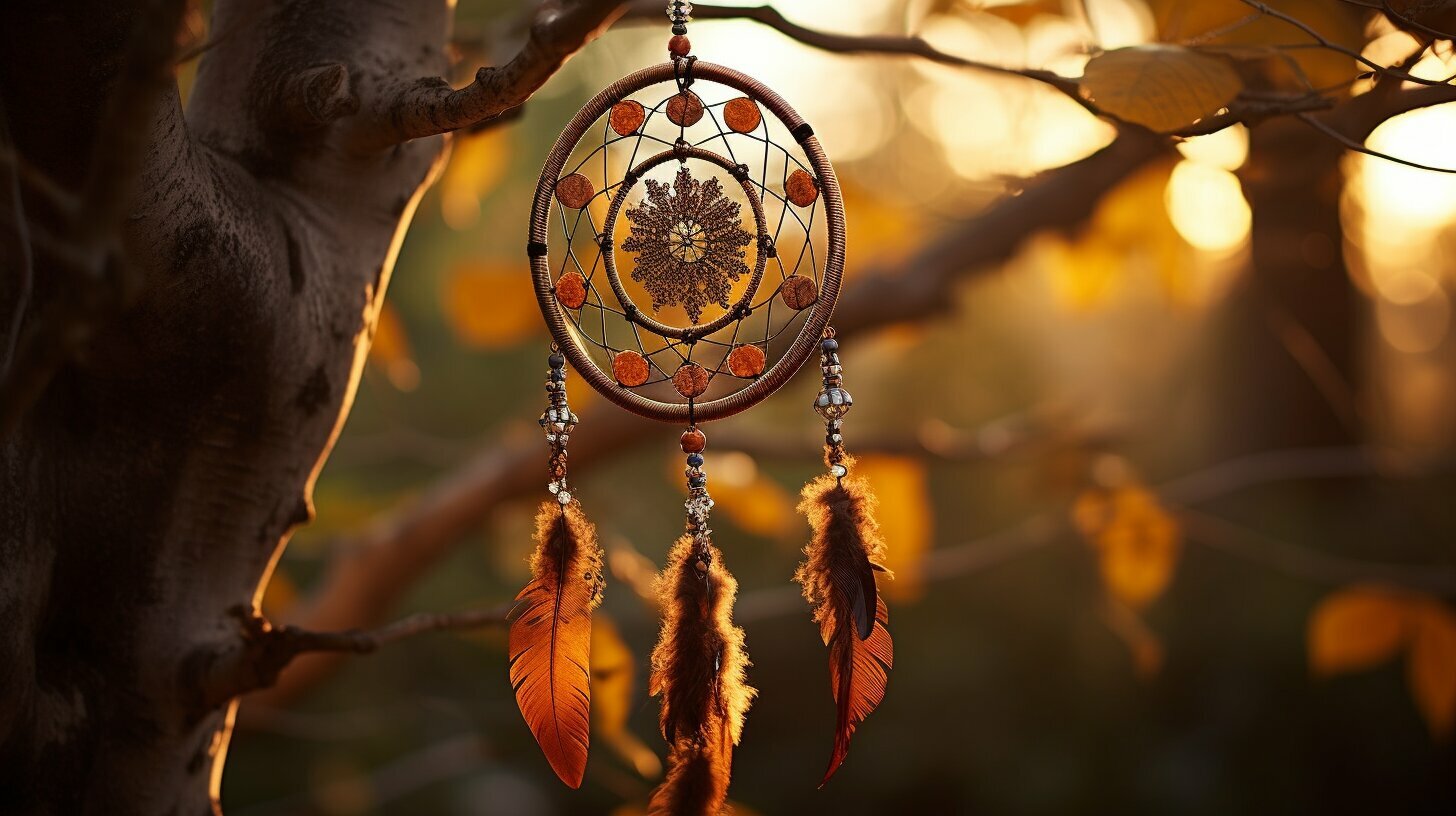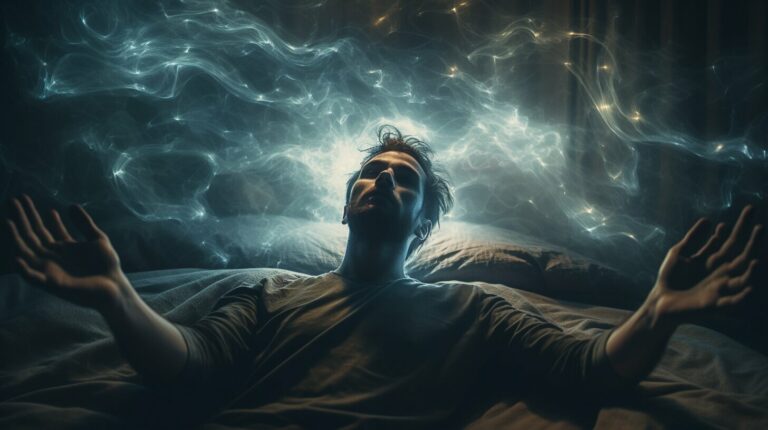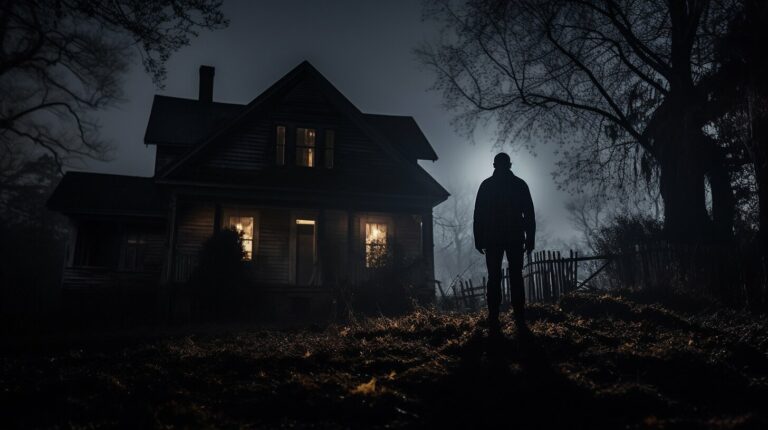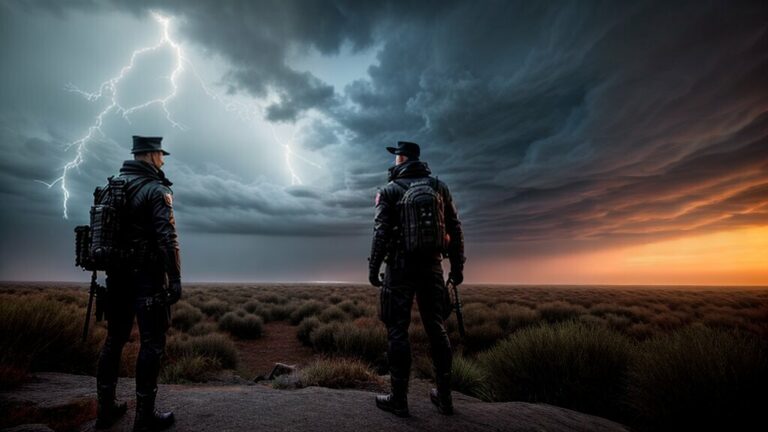*This post may contain affiliate links for which I earn commissions.*
Dream catchers have long been associated with mystical properties that filter out negative dreams and promote positivity. But do dream catchers work? In this section, we will explore the effectiveness of dream catchers and unravel the mystery behind their magical reputation. We will discuss their significance and whether they really affect dreams.
Key Takeaways:
- Dream catchers are believed to filter out negative dreams and promote positivity.
- Our exploration will focus on their effectiveness and whether they really affect dreams.
- We will delve into the significance of dream catchers in various cultures and traditions, their design and mechanics of operation, and modern interpretations and uses of dream catchers.
The Significance of Dream Catchers
Dream catchers are not just any ordinary decorative item but have a deep-rooted significance in various cultures and traditions. They are often associated with Native American culture, but their use extends to many other indigenous communities across the globe.
The traditional dream catcher design features a hoop, often made of willow, with a web of threads or cords stretched across its center, adorned with feathers, beads, and other decorative elements.
The hoop is believed to represent the circle of life, while the web inside it filters out negative dreams and allows positive dreams to pass through.
According to Native American folklore, the dream catcher acts as a protective talisman, filtering out nightmares and allowing only good dreams to pass through.
The feathers and beads attached to the web are believed to attract and capture positive energy, while the negative energy is caught and held in the web until it dissolves with the morning light.
Across different indigenous cultures, dream catchers are used for various purposes beyond just filtering dreams. They are often seen as spiritual tools for meditation, aiding in connecting with the spiritual realm and higher consciousness.
Some believe that dream catchers can even bring healing and guidance to the dreamer, helping them navigate difficult times.
The Purpose of Dream Catchers
The primary purpose of dream catchers is to filter out negative dreams and allow positive ones to flow through. However, their purpose extends beyond that; they are seen as sacred objects connecting the dreamer to the spiritual world.
Dream catchers are believed to have the power to protect and guide the dreamer, ensuring they are on the right path.
They are often used in spiritual practices and rituals, hanging in prominent places to enhance their power.
Furthermore, dream catchers are often given as gifts to friends and family members as a sign of love and protection. They are known to comfort those who receive them, and their presence is believed to offer a sense of security and peace.
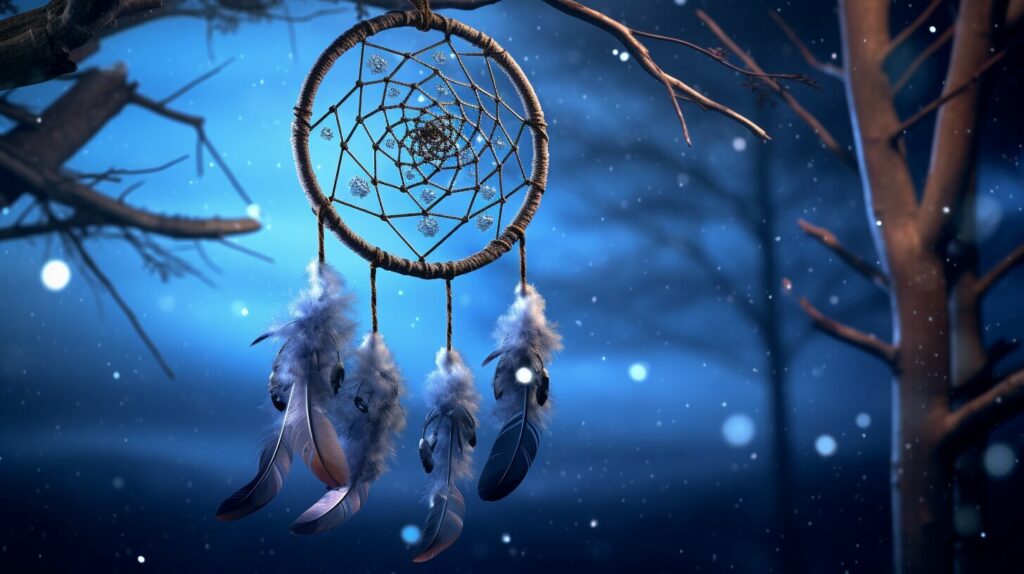
The symbolism and purpose of dream catchers have been upheld for centuries, and they continue to hold a special place in many people’s hearts and homes. Their beauty, significance, and spiritual power make them a sought-after decorative item that has transcended time and cultural barriers.
The Myth or Reality of Dream Catchers
As dream catchers have gained popularity, the question of whether they really work has raised considerable debate among skeptics and believers alike. While some swear by their effectiveness, others view them as purely symbolic objects without tangible effects on dreams.
So, do dream catchers really affect our dreams, or are they just a myth?
Scientific research on dream catchers’ efficacy remains limited. However, many anecdotal claims suggest that they help to filter out negative dreams and promote positive ones. According to believers, dream catchers capture the negative energy from our dreams in their web-like design, allowing the positive energy to flow through and enter our subconscious.
This, in turn, supposedly results in better sleep and more pleasant dreams.
While there is no concrete scientific evidence supporting the efficacy of dream catchers, it is worth noting that their power may be purely symbolic. They have deep cultural significance and are considered sacred objects in many indigenous communities.
For believers, using dream catchers can provide protection and comfort, a form of self-fulfilling prophecy that can positively impact the dreamer’s mental state.
It’s important to acknowledge that personal beliefs and attitudes heavily influence one’s perception of dream catchers’ efficacy. Some argue that the placebo effect could be responsible for the perceived effectiveness of dream catchers.
That said, many people who use dream catchers report feeling more relaxed and sleeping better after using them.
In conclusion, the efficacy of dream catchers is subjective and varies from person to person. While some might find them helpful, others may view them as a pretty decoration or symbol. Whether or not dream catchers work, they remain a fascinating and culturally significant artifact of indigenous cultures.

How Do Dream Catchers Work?
A dream catcher typically consists of a hoop adorned with woven threads, feathers, and beads. According to Native American folklore, the dream catcher captures and filters out bad dreams, allowing only good dreams to pass through and enter the sleeper’s mind.
But how exactly does this supposedly work?
There are varying beliefs about the mechanics of dream catchers, but one standard theory is that the woven threads of the dream catcher mimic the intricate patterns of a spider’s web.
Just as a spider web catches insects as they fly by, the dream catcher is said to catch negative dreams and trap them inside the web until they dissolve with the first light of the morning sun.
Another interpretation of dream catcher symbolism is that the feathers and beads represent good dreams and ideas, drawing them towards the sleeper while blocking out nightmares and negative thoughts.
While there is no scientific evidence to support the effectiveness of dream catchers, many people who use them report feeling a sense of comfort and peace when sleeping with one nearby. T
The presence of a dream catcher may serve as a reminder of positive intentions and beliefs, promoting a sense of relaxation and calmness that can contribute to better sleep quality.
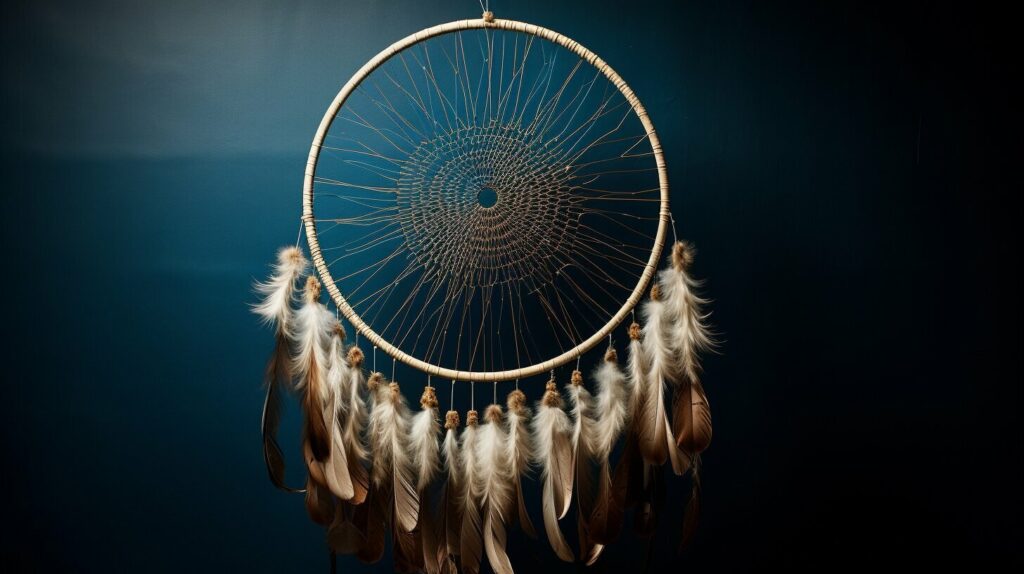
Traditional dream catchers are typically handcrafted using natural materials such as willow branches, sinew, and feathers. The weaving of threads and incorporation of symbolic elements are also believed to contribute to the dream catcher’s efficacy.
Each dream catcher is unique and may hold different meanings and beliefs depending on the culture or community it uses.
How to Choose a Dream Catcher
If you are interested in purchasing a dream catcher, there are several factors to consider. Size, materials, and craftsmanship are all essential considerations to ensure you choose a dream catcher that aligns with your personal preferences and beliefs.
- Size: Dream catchers are available in various sizes, from small and delicate to large and intricate. Consider where you will display the dream catcher and choose a size that fits the space and aesthetic.
- Materials: Traditional dream catchers are made from natural materials, but you may also find modern versions crafted from synthetic materials. Consider the environmental impact and symbolism of the materials used when selecting a dream catcher.
- Craftsmanship: A well-crafted dream catcher will typically be more effective and durable. Look for one with even weaving, secure construction, and meaningful elements such as feathers, beads, or charms.
Ultimately, whether or not dream catchers truly work is up for debate. However, many people find comfort and solace in these unique objects’ symbolic and cultural significance.
Dream catchers continue to captivate and intrigue people worldwide, whether used as a tool for better sleep or a decorative piece.
Debunking Dream Catchers
While dream catchers have gained popularity recently, some skeptics question their efficacy. Some argue that the purported effects of dream catchers are nothing more than placebo effects or simply a result of autosuggestion.
Scientific research on dream catchers is limited, with most studies focusing on their cultural significance rather than their effectiveness.
While some people attest to the positive effects of dream catchers in filtering out bad dreams and enhancing peaceful sleep, there is no conclusive evidence to support these claims.
“The idea that a physical object can capture and filter dreams has no scientific basis,” says Dr. Chris Idzikowski, director of the Sleep Assessment and Advisory Service.
Despite lacking scientific proof, dream catchers remain a popular spiritual and decorative item in many cultures. While their effectiveness cannot be objectively measured, many people find comfort in their symbolism and cultural significance.
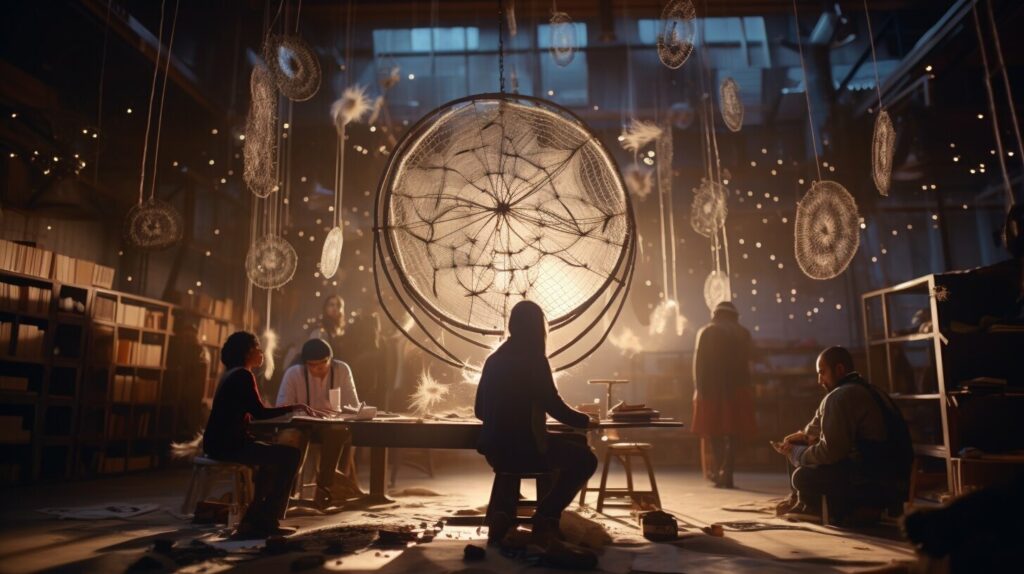
It is crucial to approach the use of dream catchers with an open mind and a healthy dose of skepticism. While they may not have any tangible effects on your dreams, they can still serve as a meaningful and visually appealing addition to your decor or a symbol of personal beliefs.
Cultural Variations of Dream Catchers
The origin of dream catchers can be traced back to the Ojibwe people. Still, variations of this object exist across different indigenous groups throughout North America, each with its unique design and symbolism. This section will explore the cultural variations of dream catchers and their significance.
Chippewa (Ojibwe) Dream Catchers
Chippewa or Ojibwe dream catchers are the traditional dream catchers widely used by indigenous groups across North America. They are made of a circular hoop, typically made of willow branches, and adorned with a web of sinew or other natural fibers.
According to Chippewa, the hoop represents the circle of life, while the web filters out bad dreams and allows good dreams to pass through. Often, feathers and beads are added as embellishments to the dream catcher.
The feathers are considered a symbol of air, which bears dreams up to the sleeping individual, while the beads represent the spider that weaves the web.
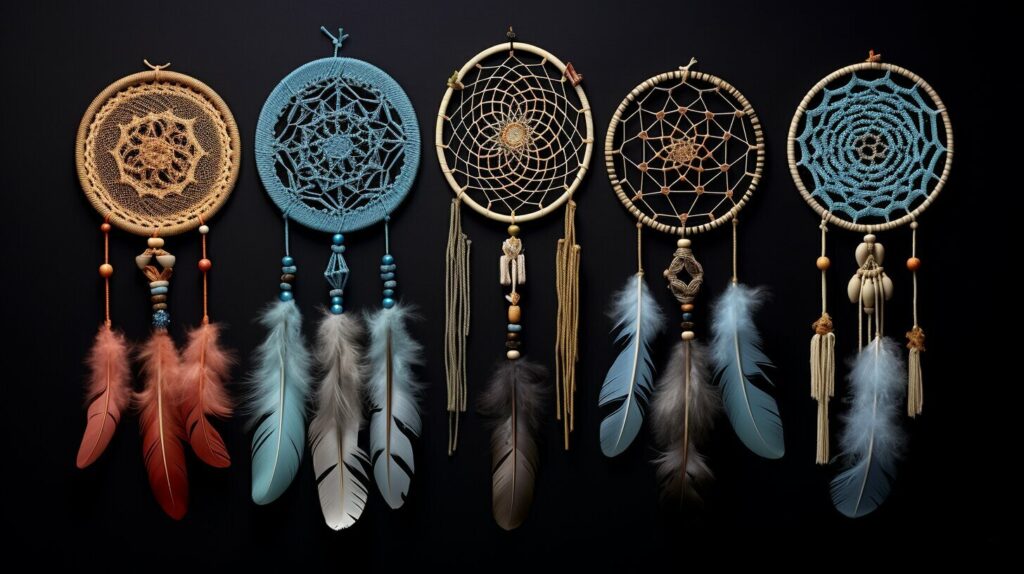
Lakota Dream Catchers
The Lakota, a Native American tribe, have their version of the dream catcher distinct from the Chippewa. The Lakota dream catcher is more elongated, with the hoop fashioned from a bent willow branch or a slender piece of wood.
The webbing is made from cat-tail or wild rose fibers, and the feathers are tied to the bottom of the hoop.
Cherokee Dream Catchers
The Cherokee dream catcher generally resembles the Chippewa dream catcher with a circular hoop and a web woven in the center. However, unlike the Chippewa dream catcher, which often features only one web, the Cherokee dream catcher may have up to seven webs.
The number seven is significant in Cherokee beliefs and represents the seven directions: east, west, north, south, up, down, and the center.
Other Variations
Several other dream catcher variations exist across indigenous groups, including the Hopi, Zuni, and Navajo people. Each group has its unique design and interpretation of the dream catcher, all culminating in this object’s rich cultural significance.
Modern Interpretations and Uses of Dream Catchers
Dream catchers have evolved beyond their traditional purpose into popular symbols and decorative items in modern times. In addition to their spiritual and cultural significance, dream catchers have found new interpretations and uses in contemporary society.
One widespread use of dream catchers is as home decor. Hanging a dream catcher in a bedroom or living room is believed to add a bohemian and relaxing vibe to any space.
They come in various sizes and designs, making it easy to find one that complements any interior style.
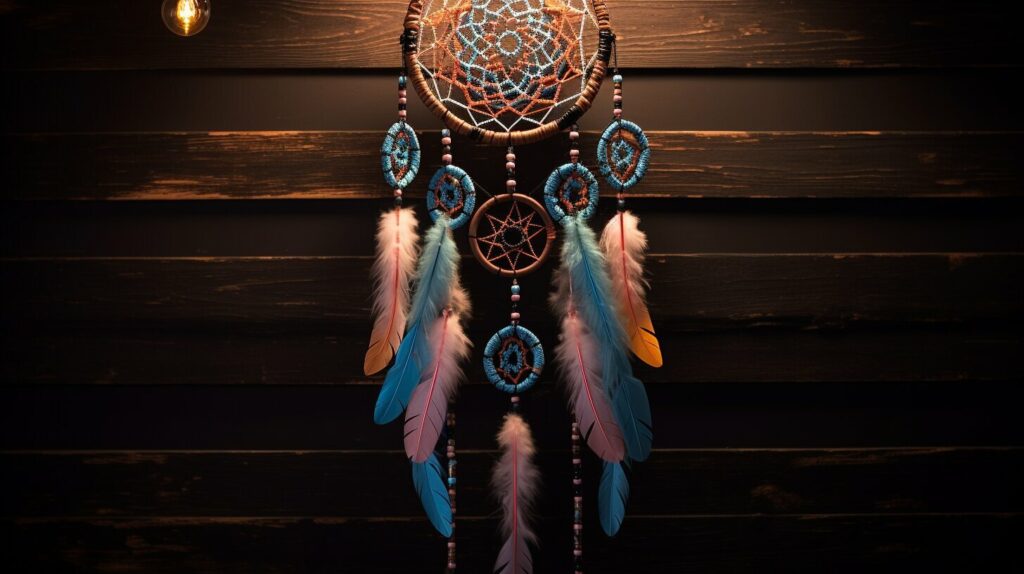
Dream catchers have also become fashionable accessories. Many jewelry designers have incorporated dream catcher designs into their pieces, including necklaces, earrings, and bracelets.
These accessories are popular among those who appreciate dream catchers’ unique and intricate designs.
In addition to their aesthetic uses, dream catchers are also used as spiritual tools. Some people use them as a form of meditation, focusing on the intricate patterns and symbols within the dream catcher to help them relax and enter a meditative state.
Overall, dream catchers have found a place in modern society as both a decorative item and a tool for spiritual practice. Whether they are used to enhance the ambiance of a room or as a form of relaxation and meditation, dream catchers continue to be beloved symbols with valuable interpretations.
Tips for Choosing a Dream Catcher
Dream catchers come in different sizes, materials, and designs. When choosing one, it’s essential to consider your personal preferences and the purpose of the dream catcher. Here are some helpful tips to guide you:
1. Consider the size
Dream catchers come in various sizes, from small to large. If you plan to use it as decoration in your room, a medium-sized dream catcher may be ideal. However, consider a larger size if you want to hang it in a bigger space.
2. Look for quality materials
The materials used in making the dream catcher can affect its durability and effectiveness. Consider dream catchers from natural materials like feathers, beads, and hemp. These are not only durable but also environmentally friendly.
3. Check the craftsmanship
Inspect the dream catcher’s construction to ensure it’s well-made. The webbing should be tightly woven, and the feathers and beads should be securely attached. A well-made dream catcher not only looks beautiful but also functions better.
4. Choose a design that resonates with you
Dream catchers come in different designs and colors. Each design has its symbolism and meaning. Choose a design that resonates with you and your beliefs.
5. Personalize it
You can personalize your dream catcher by adding your favorite colors, charms, or crystals. This can make it more unique and meaningful to you.
Considering these tips, you can choose a dream catcher that aligns with your preferences and beliefs. Remember, the most important thing is to find a dream catcher that speaks to you, whether for its beauty or symbolism.
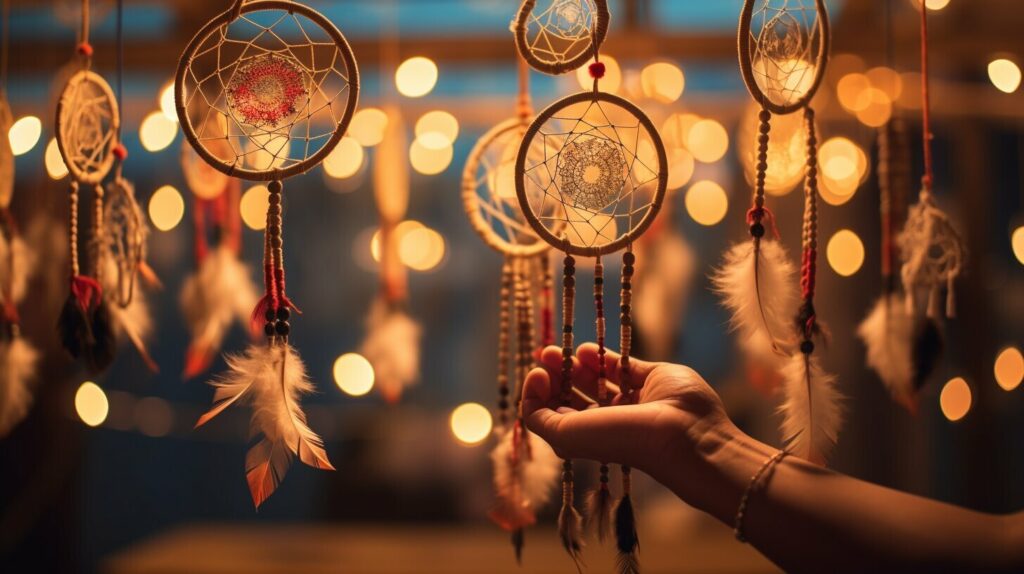
Conclusion
After exploring the various beliefs and theories surrounding dream catchers, it remains unclear whether they truly affect dreams. While some may argue that the power of dream catchers is purely symbolic, others may attest to their efficacy based on personal experiences.
While there may not be scientific evidence to definitively prove the effectiveness of dream catchers, their cultural and symbolic significance cannot be ignored. Dream catchers have been used for centuries across various cultures, and their popularity continues today with modern interpretations and uses.
When selecting a dream catcher, one must consider personal preferences and beliefs. Whether you choose a traditional or contemporary design, the materials and craftsmanship should align with your values and desires.
Final Thoughts
Ultimately, the question of whether dream catchers work may never be fully answered. However, the beauty and significance of these traditional and spiritual tools continue to captivate and inspire people worldwide.
FAQ
Q: Do dream catchers really work?
A: Dream catchers are believed to affect dreams, although their efficacy is subjective and not scientifically proven.
Q: What is the significance of dream catchers?
A: Dream catchers hold cultural and symbolic significance in various traditions. They are believed to filter out negative dreams and promote positive ones.
Q: Are dream catchers myth or reality?
A: The power of dream catchers is debated, with scientific evidence and personal experiences offering conflicting perspectives on their effects.
Q: How do dream catchers work?
A: Dream catchers are said to work by catching and filtering dreams within their web-like design, allowing only positive dreams to pass through.
Q: Are there any debunkings of dream catchers?
A: Some skeptics challenge the efficacy of dream catchers, proposing alternative explanations and citing the lack of scientific research supporting their effects.
Q: What are the cultural variations of dream catchers?
A: Dream catchers vary in design, symbolism, and beliefs across different indigenous communities, reflecting diverse cultural traditions.
Q: How are dream catchers used in modern times?
A: Dream catchers have evolved beyond their traditional purposes and are now used as home decor, fashion accessories, and spiritual tools.
Q: What should I consider when choosing a dream catcher?
A: When selecting a dream catcher, consider factors such as size, materials, and craftsmanship to align with your personal preferences and beliefs.

